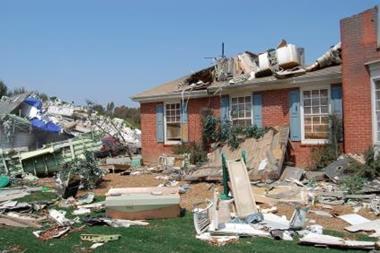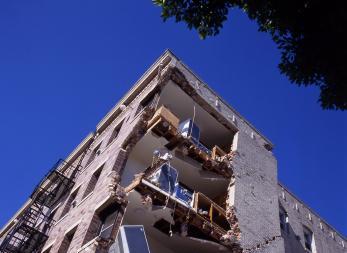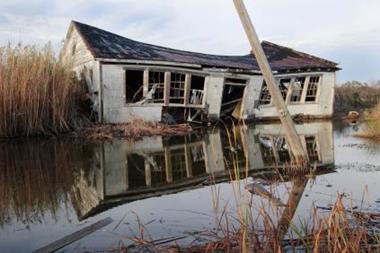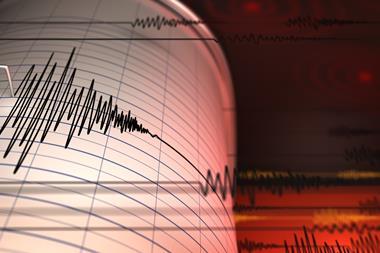Buildings completed under the requirements of a new Florida building code withstood hurricane winds in 2004 and 2005 while neighbouring, older properties were destroyed. But it should not take a disaster for our communities to adopt, implement and enforce the building safety codes that save lives every day. By Richard Weiland
As a building owner, risk manager, insurer or broker, building safety and fire prevention codes impact the work you do everyday. Where did model construction codes come from, why are they important and how do they help you?
The earliest building code can be traced back almost 4,000 years to the Code of Hammurabi. The code stated that if a house collapsed and caused the death of the owner, the home builder would be put to death. In the United States, the regulation of building construction dates back to the 1700s. By the early 1900s, special interest groups, such as the insurance industry, joined others with similar concerns to develop a model code. This first model building code gained widespread popularity among legislative authorities. It provided an accessible source of comprehensive technical requirements without the difficulties and expense of investigation, research and drafting of individual local codes.
Over time, additional code development organisations formed regionally to address unique needs in different parts of the United States. America's eastern and Great Lake states primarily followed one set of codes that included items like snow load provisions. Another set of codes was used in the southern states and addressed the area's susceptibility to hurricanes. Yet a third set for the western part of the United States included seismic provisions in its codes because of the greater likelihood of earthquakes.
While there were benefits to a regional model code system, there were also some drawbacks. If you were a code enforcement official working in one area of the country, you probably could not easily move to another area without learning all new codes and getting all new certifications. The same applied to builders and architects. Homebuilders in the east would have to use a different set of codes if they wanted to do a project in the west; an architect designing a store in the northern United States might not have been able to use the same design in the south. Building owners and insurers faced similar difficulties in developing consistent methods to assess the value and risk of their investments.
Responding to the call for a single set of comprehensive and coordinated construction codes that could be used throughout the United States and around the world, the US model code organisations established the International Code Council. By consolidating the model code organisations and hundreds of years of combined experience, the Code Council is now better able to serve the needs of the entire industry. The International Codes
(I-Codes) bring together all of the strengths of the regional codes into one code and provide a level of uniformity across America. Having fairly consistent codes from coast to coast makes code enforcement officials and inspectors more mobile and it allows builders, contractors, engineers, architects and others in the building industry to work with one set of building codes.
Today, the I-Codes include 14 coordinated building safety and fire prevention codes. They govern a wide range of safety systems, including design and structural requirements, fire prevention, electrical, plumbing and mechanical systems, property maintenance, energy efficiency and zoning. The International Code Council has about 44,000 members including state, county and municipal code enforcement and fire officials, architects, engineers, builders, contractors, elected officials, manufacturers and others in the construction industry. There are also about 400 Code Council members from nearly 60 countries outside the United States. The Code Council also has five international chapters.
All 50 US states and Washington DC have adopted the I-Codes to provide minimum safeguards for people at home, at school and in the workplace. Federal agencies including the Architect of the Capitol, General Services Administration, National Park Service, Department of State, U.S. Forest Service and the Veterans Administration also enforce the I-Codes. The Department of Defense references the International Building Code for constructing military facilities, including those that house American troops around the world and at home.
The International Code Council also cooperates with many countries on specific technical code issues and topics, including administration and enforcement of the I-Codes. Through this collaboration, we find many common areas of building design methodologies, and where there are differences, we learn from each other to increase our respective knowledge and to improve the codes. Many US design firms obtain approvals from other countries to use the I-Codes for their building designs because they are very comprehensive in addressing specific technical building safety subjects and are deemed to be technically sound. The Code Council currently has working agreements and others under consideration to provide technical and other code assistance with Afghanistan, Egypt, Georgia, Kazakhstan, Mexico, Pakistan, Qatar, Saudi Arabia, the United Arab Emirates, and several Caribbean nations.
Protection from fire, structural collapse, earthquakes, wind and other natural and man-made disasters are among the most important functions of building safety and fire prevention codes. Safe buildings are achieved through proper design and construction practices in concert with a code administration program that ensures compliance. Studies show that every dollar spent to build safer and stronger buildings saves $4 to $7 in future losses. Adopting, implementing and enforcing building codes also keeps construction costs down by establishing uniformity in the construction industry. This uniformity allows building and materials manufacturers to do business on a larger scale and pass some of those savings on to the consumer.
Building to code can also save property owners money. As building owners, investors and insurers, you put a substantial investment into your properties. A properly constructed building will be more resistant to general deterioration. Codes can conserve energy, resulting in cost savings and reduction in the use of natural resources. Codes also help protect real estate investments by providing a minimum level of construction quality and safety. Insurance companies recognise communities with strong codes and code enforcement and may reduce property insurance costs. A community may also be more attractive for economic development and business investments if it adopts and enforces model codes.
“Protection from fire, structural collapse, earthquakes, wind and other natural and man-made disasters are among the most important functions of building safety and fire prevention codes
Voluntary adoption
In the United States, legislative bodies are not obligated to adopt model building safety or fire prevention codes, and may write their own code or portions of a code. A model code has no legal standing until it is adopted as law. When it is adopted as law, all owners of property within the boundaries of the adopting jurisdiction are required to comply.
Because codes are updated, existing structures usually are required to meet the code that was inforced when the property was built. The primary application of a building code is to regulate new construction. Building codes usually only apply to an existing building if the building undergoes reconstruction, rehabilitation or alteration, if the occupancy of the existing building changes, or if the building is deemed by the building official to be in an unsafe condition as defined by the code.
Updated every three years with a supplementary edition every 18 months, the I-Codes contain the latest building construction technologies and take into account valuable lessons learned. They offer jurisdictions the newest building safety and fire prevention codes with the latest in materials and techniques, and the most up-to-date life-safety provisions. The Code Council uses a governmental consensus process to develop its building safety and fire prevention codes. It is an open, inclusive method that allows input from all individuals and groups. Technical committees hear all code change proposals and an appeals process allows anyone to challenge an action or inaction of a code committee. International Code Council voting members - code enforcement and other government officials with no vested interest other than public safety - make the final decisions on code change proposals.
The Code Council also develops standards or incorporates standards developed by other organisations in the construction industry. Standards serve as a supplement to the codes and represent an industry consensus on how a material, product or assembly is to be designed, manufactured, tested or installed. Code Council standards are developed in conjunction with industry organisations and other professional associations. For example, the Council recently completed development of a consensus standard for the construction of log homes and log structures - a first-of-its-kind standard to promote the design, construction and installation of safe and reliable log structures. The Code Council also has joined with the United States' major residential building organisation, the National Association of Home Builders, to develop a Green Home Building Standard to bring uniformity to sustainable building practices. By working with the home builders' association to develop this standard, the Code Council will help bring ecological building into the mainstream, while ensuring that the practices are safe, sustainable and affordable.
Disaster resistance
While no building can be made totally disaster proof, applying and enforcing modern codes can make structures more resistant to disasters such as hurricanes and earthquakes. As part of a comprehensive mitigation programme, they are, without a doubt, a community's best chance to survive and recover from a natural disaster. After Hurricane Andrew devastated Florida in 1992, the state adopted a statewide model building code based on the I-Codes that succeeded in limiting damage during the destructive 2004 and 2005 hurricane seasons. In fact, buildings completed under the requirements of the new Florida Building Code withstood high winds right next to older properties that were destroyed. In addition, the Code Council is developing a hurricane resistant construction standard to provide minimum requirements to safeguard the public through requirements for buildings and other structures in hurricane prone areas.
Following Hurricanes Katrina and Rita in 2005, a federal inspection team found that damage was amplified by a lack of construction standards along the Gulf Coast. At the time of the hurricanes, none of the most severely affected states - Louisiana, Mississippi, and Alabama - had statewide building codes - though Louisiana has since adopted the International Codes. In Mississippi, a January 2006 study by the Louisiana State University Hurricane Center found that losses from a hypothetical Category 3 hurricane would be reduced by 65% if the state's structures were all built to new codes.
I often tell the story of two earthquakes that occurred in December 2003, shortly after I joined the International Code Council. The first was a Magnitude 6.5 quake in central California, near the town of San Simeon. Two lives were lost, 47 people were injured, and approximately 500 structures in a two county area were damaged. Four days later, a Magnitude 6.6 quake hit close to the ancient city of Bam, in Iran. According to official estimates, more than 43,000 people were killed, 30,000 injured and up to 75,000 left homeless. Eighty-five percent of the buildings in Bam were damaged or destroyed. Two earthquakes, similar in magnitude, but with shockingly different outcomes.
Catastrophic disasters illustrate, in the starkest terms possible, what building codes can mean to communities around the world. It should not take a disaster for our communities to adopt, implement and enforce the building safety codes that save lives every day.
Postscript
Richard Weiland is CEO of the International
Code Council.
Website: www.iccsafe.org




















No comments yet